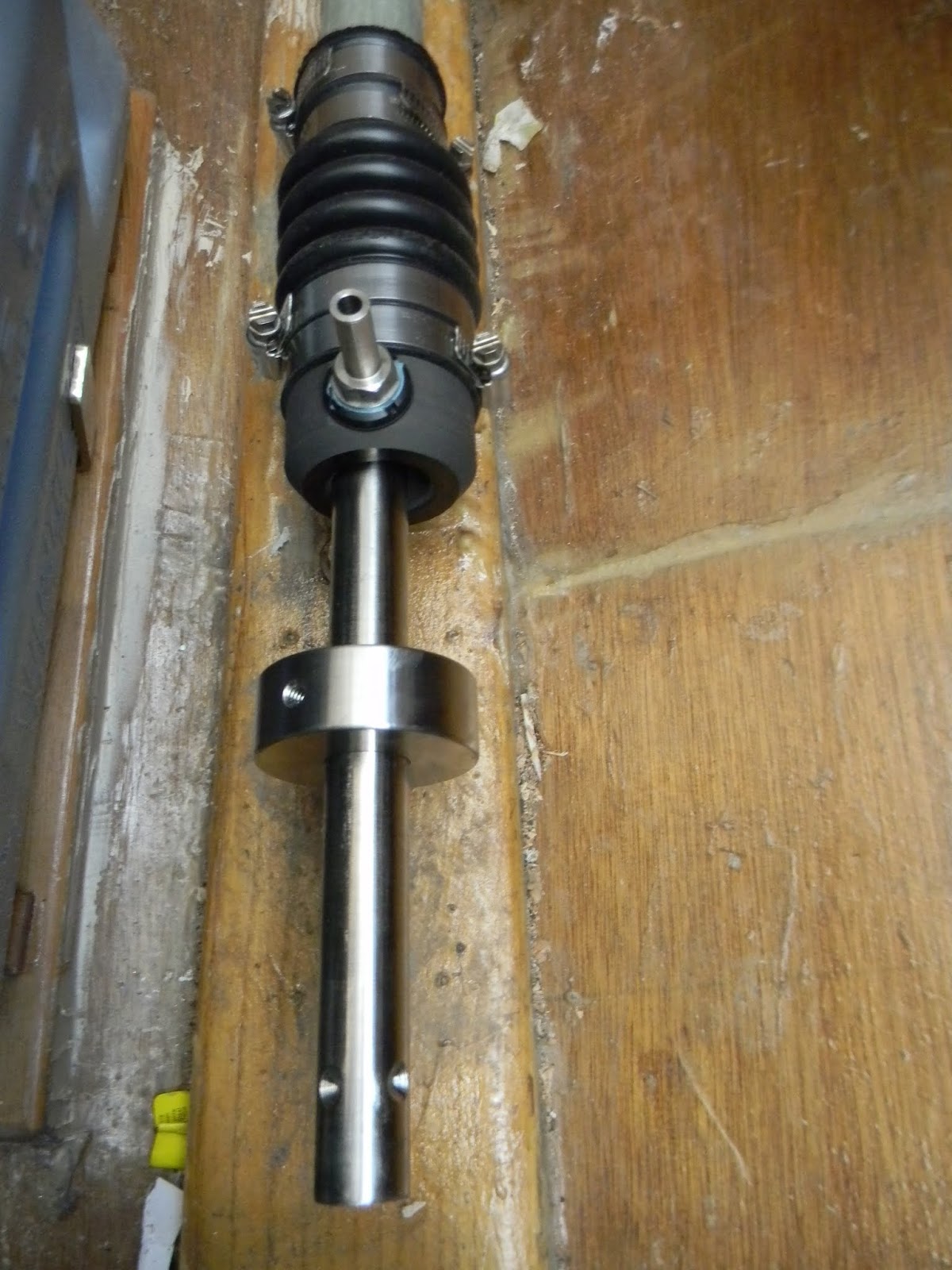| Brad Linthicum takes my check, gives me my sails, and shakes my hand. Assistant Mary Anne looks on. |
I opted for a traditional installation, given the traditional lines of Grey Seal. The mainsail is lashed to the gaff. That was easily done on the shop floor by bring the gaff inside. The weather outside was rough -- 93 degrees and dog breath humidity -- so working in the air conditioned shop as much as possible was a definite plus.
I used steam bent mast hoops to connect the mainsail to the mast. Tying the hoops to the grommets had to be done outside, of course. Dave Dormond, who is a first rate young wooden boat builder and is in charge of education programs at the Independence Seaport Museum's Workshop on the Water, gave me valuable advice and assistance with this.
The installation was trouble free. The peak and throat halyards worked fine, everything held together, and we were able to raise the mainsail for the first time. When raising it, we noted a tendency for the mast hoops to rub on the forward side of the mast, making raising the sail a little more difficult. I resolved this problem by installing a light line along the forward edge, tied at the top to the gaff jaws and knotted to each mast hoop, holding the hoops horizontally rather than allowing them to droop. Effective solution, 15 minutes of effort.
| The mainsail raised for the first time. |
I still need to install an outhaul on the boom, which should be a simple proposition. I also need to decide how to route the jib sheets back to the cockpit, but that is a job for another day.
| View of mast hoops. They don't droop anymore. |

































